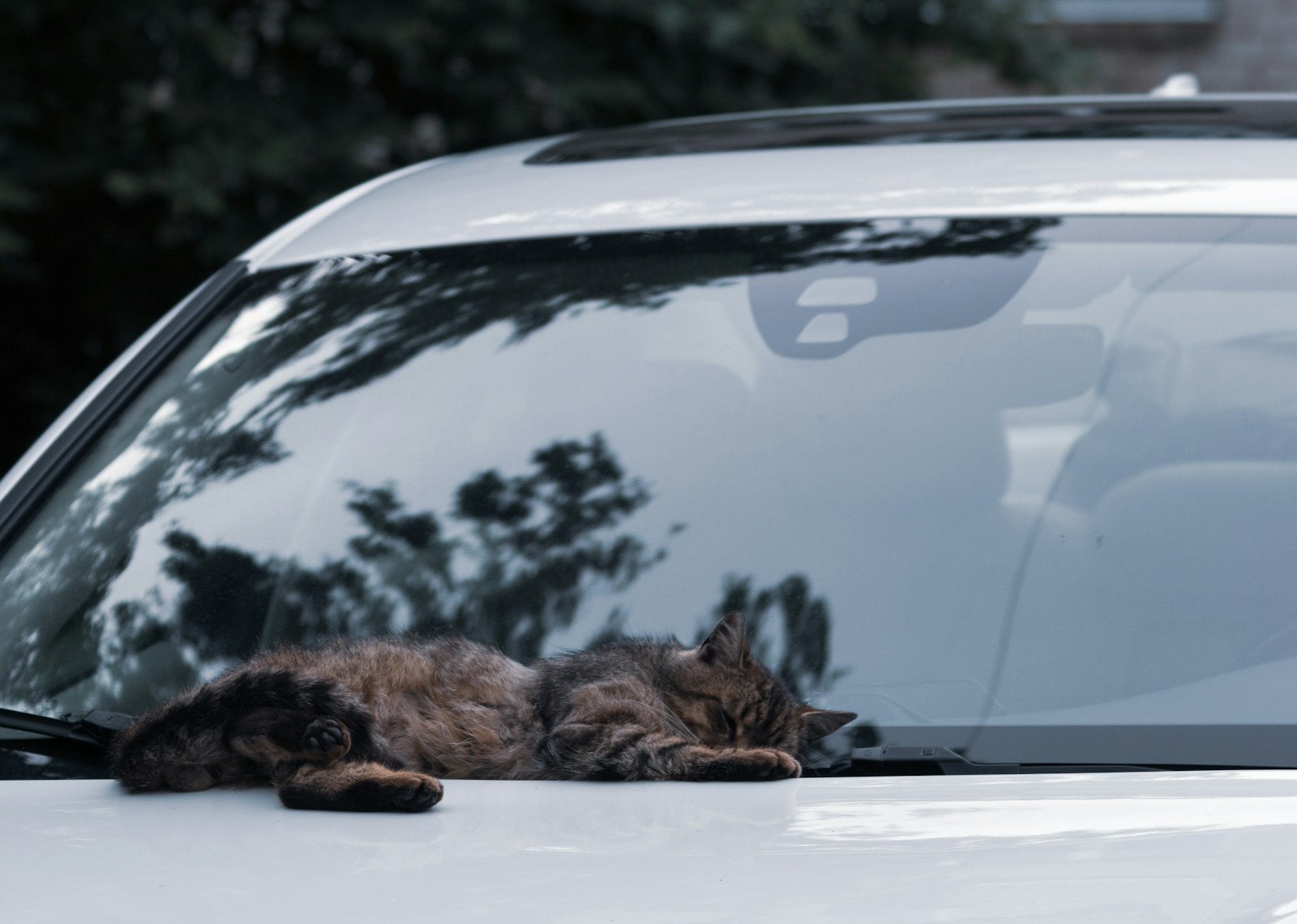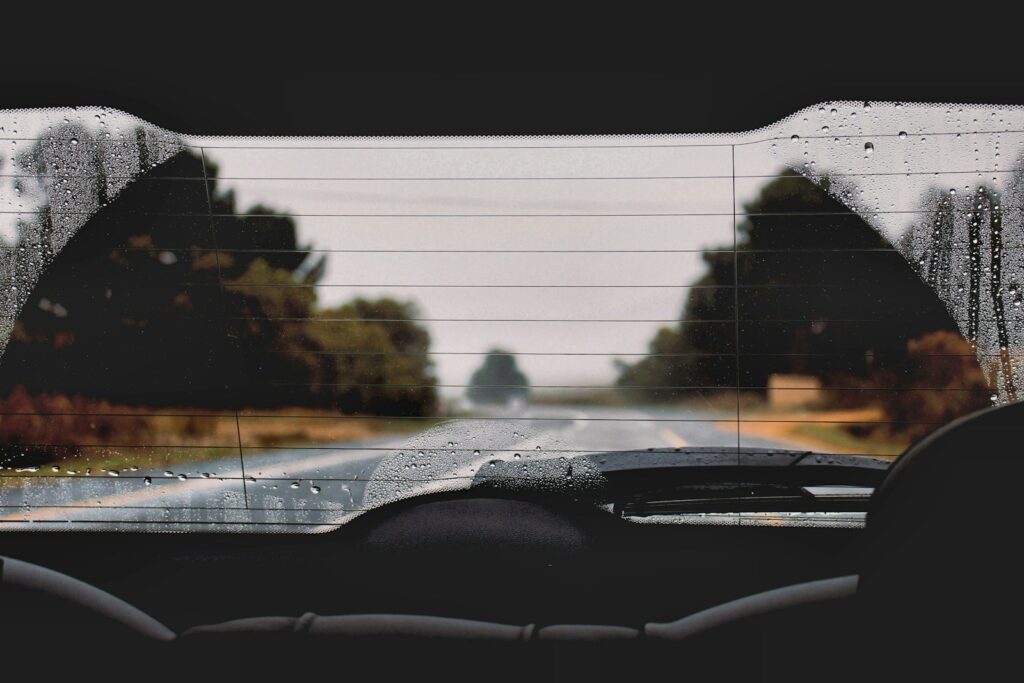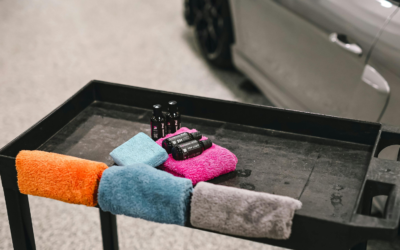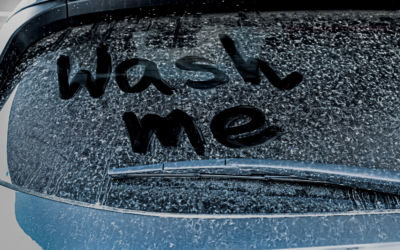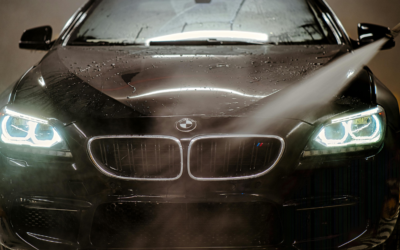Do you know how to clean car windows?
Crystal-clear car windows aren’t just about aesthetics—they’re essential for safe driving. Dirty, streaky windows can obstruct your vision and create dangerous blind spots, especially when driving at night or during harsh weather conditions. Whether you’re dealing with stubborn water spots, interior film buildup, or just want that showroom shine, learning the proper techniques for cleaning auto glass will transform both your car’s appearance and your driving experience.
Most car owners struggle with streaky windows despite their best efforts. The culprit is usually improper technique, wrong materials, or cleaning at the wrong time of day. This comprehensive guide will walk you through professional-grade methods to achieve spotless, streak-free windows every time. You’ll learn about the right tools, cleaning solutions, and step-by-step techniques that professional detailers use to get perfect results.
From understanding why streaks form to mastering the proper wiping motions, we’ll cover everything you need to know about cleaning both interior and exterior windows. By the end of this guide, you’ll have the knowledge and confidence to maintain crystal-clear windows that enhance both safety and style.
Why Proper Window Cleaning Matters
Clean car windows serve multiple purposes beyond visual appeal. Clear glass ensures maximum visibility while driving, reducing the risk of accidents caused by obstructed vision. Dirty windows can scatter light from oncoming headlights, creating glare that impairs your ability to see clearly at night.
Properly maintained auto glass also lasts longer. Dirt, grime, and environmental contaminants can actually etch into glass over time, creating permanent damage that requires professional restoration or replacement. Regular cleaning prevents this buildup and preserves your windshield and windows.
Additionally, clean windows contribute significantly to your vehicle’s overall appearance and resale value. Potential buyers often judge a car’s condition based on details like window cleanliness, making this maintenance task a worthwhile investment.

Essential Tools and Materials for Streak-Free Results
The foundation of professional window cleaning lies in using the right tools and materials. Quality equipment makes the difference between frustrating, streaky results and crystal-clear perfection.
Microfiber Cloths and Towels
Microfiber cloths are superior to paper towels for cleaning auto glass. Unlike paper towels, which can leave lint and micro-scratches, microfiber towels trap dirt and absorb moisture without scratching delicate surfaces. You’ll need at least two microfiber cloths: one for applying cleaning solution and another for final buffing.
Choose microfiber towels specifically designed for glass cleaning. These typically have a tighter weave and shorter pile than general-purpose microfiber cloths. Avoid using fabric softener when washing microfiber towels, as it reduces their absorbency and cleaning effectiveness.
Professional Glass Cleaning Solutions
While household cleaners might seem convenient, professional auto glass cleaners are formulated specifically for automotive applications. These solutions cut through automotive-specific contaminants like road film, exhaust residue, and rubber deposits from wiper blades.
You can also create an effective homemade solution using isopropyl alcohol. Mix one part 70% isopropyl alcohol with three parts distilled water. This solution evaporates quickly, reducing streak formation, and effectively dissolves oil-based contaminants.
Spray Bottles and Application Tools
A quality spray bottle ensures even distribution of cleaning solution. Choose one with an adjustable nozzle that can produce both fine mist and targeted spray patterns. For heavily soiled windows, consider using a foam applicator or soft-bristled brush to agitate stubborn dirt before wiping.
Preparing Your Car for Window Cleaning
Proper preparation sets the stage for successful window cleaning. Start by parking your vehicle in a shaded area, away from direct sunlight. Heat from the sun causes cleaning solutions to evaporate too quickly, leaving behind streaky residue before you can properly wipe the glass.
Allow your car to cool down if you’ve been driving. Hot glass can cause cleaning solutions to flash-dry, making streak-free results nearly impossible to achieve. The ideal temperature for window cleaning is between 50-70°F in the shade.
Roll down your windows slightly to access the top edges where dirt and grime often accumulate. This hidden area is frequently overlooked but contributes to overall window cleanliness. Clean these edges first to prevent dirt from running down onto freshly cleaned glass.
Remove any obvious debris like leaves, ice, or heavy dirt deposits before applying cleaning solution. Use a soft brush or cloth to gently remove stubborn particles that could scratch the glass during the cleaning process.
Step-by-Step Exterior Window Cleaning
Cleaning exterior windows requires a systematic approach to ensure thorough coverage and streak-free results. The key is working efficiently while the cleaning solution remains active on the glass surface.
Initial Cleaning and Solution Application
Begin by spraying the cleaning solution generously across the entire window surface. Start from the top and work your way down, ensuring complete coverage. For heavily soiled windows, allow the solution to dwell for 30-60 seconds to break down stubborn contaminants.
Use a clean microfiber cloth to wipe the glass using horizontal strokes across the top of the window, then switch to vertical strokes as you work downward. This technique prevents dirt from being pushed into corners where it can cause streaking.
The Critical Wiping Technique
The secret to streak-free windows lies in your wiping technique. Professional detailers use a specific up-and-down motion that ensures complete solution removal without leaving residue behind.
Start at the top corner of the window and pull your microfiber towel straight down to the bottom in one smooth motion. Overlap each stroke by about an inch to ensure no areas are missed. The consistent vertical motion prevents the horizontal streaking that commonly occurs with circular or random wiping patterns.
After completing the vertical strokes, use a clean, dry microfiber cloth to buff the glass using the same up-and-down motion. This final step removes any remaining solution and polishes the glass to a perfect clarity.
Addressing Stubborn Spots and Residue
Some contaminants require extra attention to remove completely. Water spots, tree sap, and bug residue may need additional treatment beyond standard cleaning solutions.
For water spots, apply cleaning solution and let it dwell longer, then use gentle circular motions with your microfiber cloth to break down mineral deposits. Avoid excessive pressure, which can scratch the glass.
Tree sap and sticky residues respond well to isopropyl alcohol applied directly to the affected area. Allow it to soften the residue for a few minutes before gently wiping away.
Interior Window Cleaning Techniques
Interior windows present unique challenges due to limited space and different types of contamination. Interior glass typically accumulates film from outgassing plastics, cigarette smoke, and human oils from touching the glass.
Dealing with Interior Film Buildup
Interior windows often develop a thin film that causes glare and reduces visibility. This film requires specific cleaning techniques to remove completely without leaving streaks in the confined space.
Lower your windows slightly to access the top edge, which often harbors the heaviest film buildup. Spray your cleaning solution sparingly—interior cleaning requires less solution than exterior work due to the confined space and different contamination types.
Use your microfiber cloth to wipe in straight lines from top to bottom, just as with exterior windows. However, work in smaller sections due to the cramped quarters. The consistent vertical motion remains crucial for streak-free results.
Navigating Dashboard and Interior Obstacles
Cleaning interior windows requires careful navigation around the dashboard, seats, and other obstacles. Position yourself comfortably before starting, and work systematically to avoid missing spots or creating awkward angles that lead to poor results.
For rear windows, fold down rear seats if possible to improve access. Use a smaller microfiber cloth for better maneuverability in tight spaces. Clean the center areas first, then work toward the edges where you have less room to maneuver.
Common Mistakes That Cause Streaks
Understanding why streaks occur helps prevent them from happening in the first place. Most streaking issues stem from a few common mistakes that are easily avoided with proper technique.
Using Paper Towels and Wrong Materials
Paper towels are the enemy of streak-free windows. They leave behind lint, don’t absorb solutions effectively, and can create micro-scratches that become visible in certain lighting conditions. Similarly, old t-shirts and cloth rags often contain detergent residue or fabric softener that creates streaking.
Stick to high-quality microfiber cloths designed specifically for glass cleaning. Replace microfiber towels when they become worn or lose their absorbency, as degraded microfiber won’t deliver professional results.
Incorrect Timing and Environmental Conditions
Cleaning windows in direct sunlight or on hot surfaces virtually guarantees streaky results. The cleaning solution evaporates too quickly, leaving behind concentrated residue that appears as streaks and spots.
Similarly, cleaning in very cold conditions can be problematic, as solutions may not work effectively and can even freeze on the glass. Aim for mild temperatures and shaded conditions for optimal results.
Poor Solution Distribution and Technique
Applying too much or too little cleaning solution both cause problems. Too much solution overwhelms your microfiber cloth’s absorption capacity, leaving excess liquid that dries into streaks. Too little solution fails to properly dissolve contaminants, requiring multiple passes that increase the likelihood of streaking.
The circular wiping motions that work well for other car surfaces actually promote streaking on glass. Stick to the proven up-and-down technique used by professional window cleaners for consistently excellent results.
Advanced Tips for Professional-Quality Results
Professional detailers employ several advanced techniques that can elevate your window cleaning results from good to exceptional.
The Two-Towel Method
Professional detailers always use separate towels for cleaning and drying. The first microfiber towel applies and works the cleaning solution, while the second, completely dry towel buffs the glass to final clarity. This separation prevents cross-contamination and ensures the drying towel maintains maximum absorbency.
Keep your drying towel exclusively for final buffing—never use it to apply solutions or clean heavily soiled areas. This dedicated approach maintains the towel’s effectiveness and prevents introducing contaminants that could cause streaking.
Working in Sections for Large Windows With Up and Down Motion
Need a streak free windshield? Large windows like your car’s windshields and rear windows benefit from sectional cleaning rather than attempting to clean the entire surface at once. Divide large glass areas into manageable sections, typically working from passenger side to driver side.
Complete each section fully—application, wiping, and buffing—before moving to the next area. This prevents cleaning solution from dwelling too long on untreated sections while ensuring each area receives proper attention.
Seasonal Considerations and Special Conditions
Different seasons present unique window cleaning challenges that require adapted techniques. Winter conditions may leave salt residue that requires stronger solutions and additional rinsing. Summer heat intensifies the need for shaded working conditions and quick, efficient technique.
Rainy seasons often leave water spots that need special attention, while spring brings pollen and tree sap that require targeted treatment. Adjust your cleaning frequency and techniques based on seasonal conditions and environmental factors.
Maintaining Clean Windows Between Deep Cleanings
Consistent maintenance prevents heavy buildup that makes deep cleaning more difficult. Regular light cleaning maintains visibility and prevents contaminants from etching into the glass surface.
Keep a spray bottle of cleaning solution and microfiber cloths in your car for quick touch-ups during fuel stops or breaks. Address spots and light contamination immediately, before they have time to bond with the glass surface.
Use your windshield washer system regularly with quality washer fluid to remove light contamination during driving. However, don’t rely solely on wipers and washer fluid—they can’t address interior contamination or provide the thorough cleaning that manual techniques achieve.

When to Seek Professional Help At Love My Car Car Wash
While proper technique handles most window cleaning challenges, certain situations warrant professional attention. Deep scratches, permanent water spot etching, and severe contamination may require professional restoration techniques beyond standard cleaning methods.
Professional services like those offered at Love My Car Car Wash & Detail Center in Germantown, MD, combine specialized equipment with expert technique to address challenging window cleaning situations. Their full-service packages include professional window cleaning as part of comprehensive vehicle care.
Consider professional services when dealing with restored or classic vehicles, where improper technique could cause expensive damage. Professional detailers have experience with various glass types and can adapt their techniques accordingly.
Top Car Waxes to Consider
Here is a selection of six highly rated car wax products, each designed to cater to various needs and preferences. Click the links to learn more or purchase them directly from their official websites.
Meguiar’s Ultimate Liquid Wax
This synthetic polymer wax offers long-lasting protection, enhanced gloss, and excellent water-beading. Ideal for those seeking durability and ease of application.
Turtle Wax Super Hard Shell Paste Wax
A classic choice for strong protection and a high-gloss shine. This paste wax is known for its durability and ability to shield your car from the elements.
Chemical Guys Butter Wet Wax
Perfect for car detailing enthusiasts, this liquid wax delivers a deep, wet-looking shine. It offers easy application and natural carnauba-based protection.
P21S Carnauba Wax
Renowned for its incredible shine, this natural carnauba wax provides a smooth finish without leaving any residue. It’s great for sensitive paint finishes.
Collinite No. 845 Insulator Wax
A favorite among car enthusiasts for its exceptional durability and protection. It works well across various climates and offers an impressive shine.
Griot’s Garage Best of Show Paste Wax
Designed for show-stopping gloss, this paste wax is perfect for those who prioritize appearance. It’s loved for its deep, rich finish and quality protection.
Each of these options has unique strengths, so assess your needs to find the best car wax for your vehicle and lifestyle. Make sure to follow the application instructions to achieve the best results!
Your Path to Crystal-Clear Windows | How To Clean Car Windows
Mastering the art of streak-free window cleaning transforms both your car’s appearance and your driving safety. The combination of proper materials, correct technique, and optimal timing creates professional-quality results that enhance visibility and vehicle aesthetics.
Remember that consistency is key—regular maintenance prevents heavy buildup that makes cleaning more difficult and time-consuming. Start with the right tools, practice the vertical wiping technique, and work in shaded conditions for best results.
Whether you choose to master these techniques yourself or seek professional services, clean windows are an essential aspect of vehicle maintenance that pays dividends in safety, appearance, and driving enjoyment. Take the time to implement these proven methods, and you’ll never struggle with streaky windows again.

